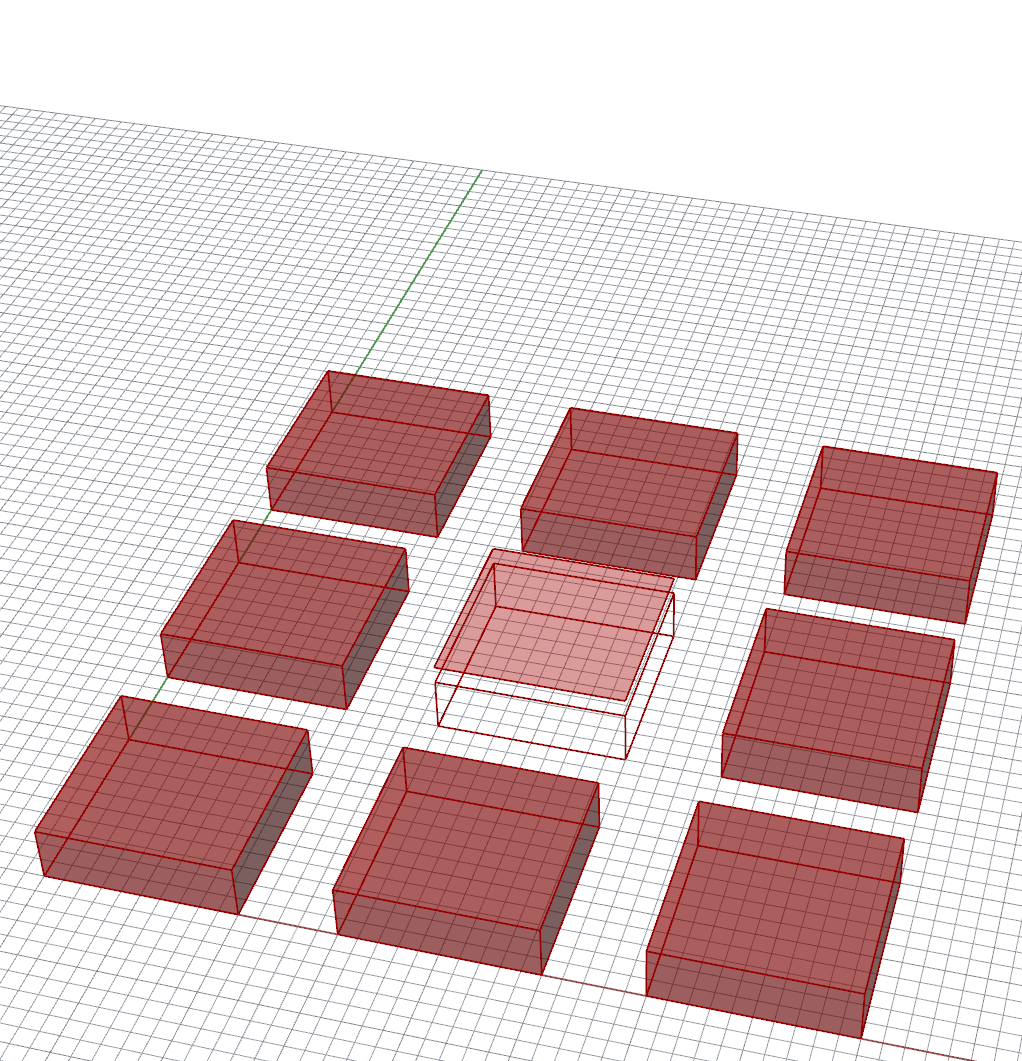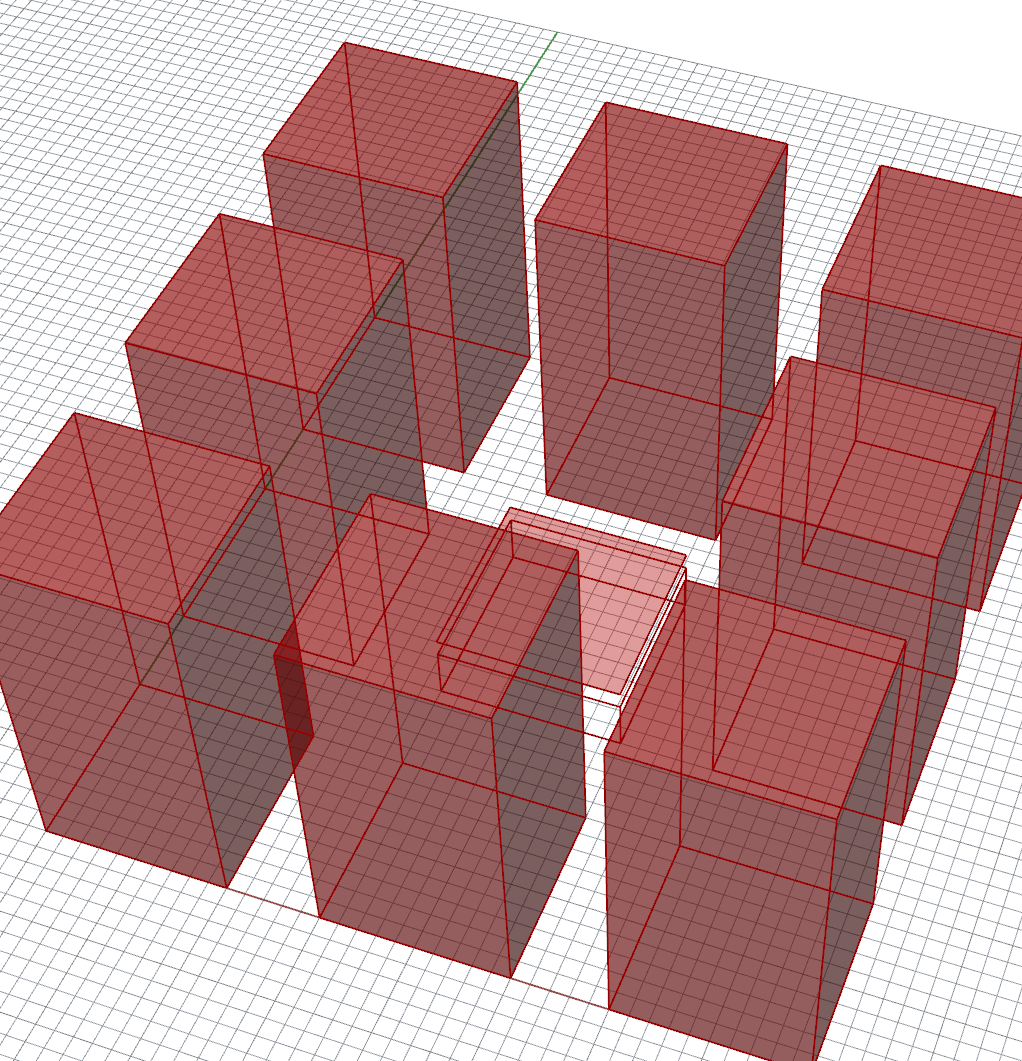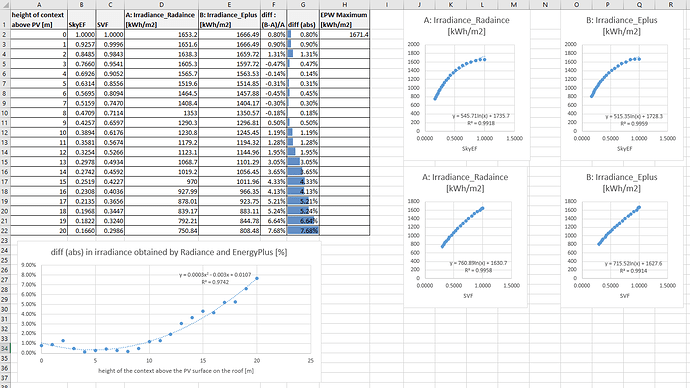The test scene is simple: a dummy thermal zone with a horizontal shading surface above it which is specified as PV surface in EnergyPlus. Ladybug and Honeybee were used to build the workflow.
Irradiance at the center of this shading surface was obtained through Radiance (ab=3) and EnergyPlus by adjusting the height of the context buildings gradually.
A. The context buildings are below the roof PV surface
B. The context buildings are 20m above the roof PV surface
It seems that:
- for the unobstructed scenario, both Radiance and EnergyPlus reported slightly lower irradiance than the annual total GHI calculated from the EPW weather file used as their input, with Radiance having larger underestimation (1.1%) than EnergyPlus (0.3%).
- as the height of the context increases, the difference in irradiance at the centre of the roof surface will increase up to 7.7% when the context building is 20m above the surface, or a height-to-width ratio of 1.
My questions are:
- What could be the cause of the underestimation of irradiance for a unobstructed surface using both Radiance and EnergPlus, although the rate could be regarded as marginal?
- Should the large difference in simulated irradiance btw Radiance and EnergyPlus for highly obstructed surfaces be a concern for solar potential analysis in relatively dense urban environment?
Appreciate your input.


